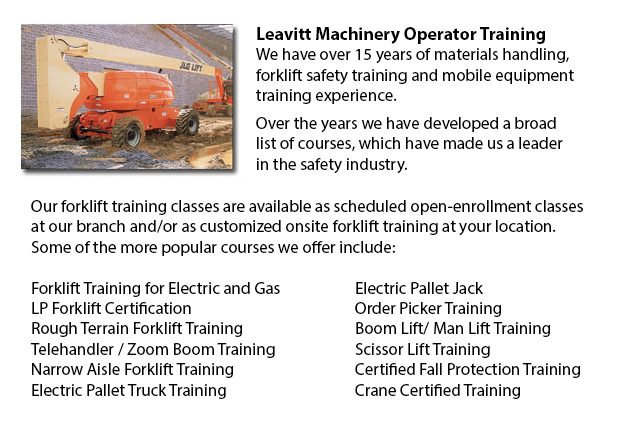
Oakville Boom Lift Safey Training - Boom lifts are a type of elevated work platform or aerial lifting device which are commonly utilized in warehousing, construction and industry. Boom lifts could be made use of in almost whatever environment because of their versatility.
The elevated work platform is utilized so as to enable access to heights which were otherwise unreachable using other means. There are dangers inherent when utilizing a boom lift device. Workers who operate them should be trained in the right operating procedures. Avoiding accidents is vital.
Boom Lift Training Programs include the safety aspects involved in boom lift operation. The program is suitable for individuals who operate self-propelled elevated work platforms and self-propelled boom supported elevated work platforms. Upon successful completion of the course, participants will be issued a certificate by somebody licensed to verify completing a hands-on assessment.
In order to help train operators in the safe use of elevated work platforms, industry agencies, local and federal regulators, and lift manufacturers all play a role in establishing standards and providing the necessary information. The most essential ways in preventing accidents connected to the utilization of elevated work platforms are as follows: putting on safety gear, performing site assessment and checking machinery.
Vital safety factors when operating Boom lifts:
Operators stay away from power line, observing the minimum safe approach distance (or also known as MSAD). Voltage could arc across the air to be able to find an easy path to ground.
In order to maintain stability when the platform nears the ground, a telescopic boom must be retracted before lowering a work platform.
Boom lift workers must tie off to ensure their safety. The harness and lanyard apparatus should be attached to manufacturer provided anchorage, and never to other wires or poles. Tying off may or may not be required in scissor lifts, depending on specific local regulations, employer guidelines or job risks.
Avoid working on a slope which goes beyond the maximum slope rating as specified by the manufacturer. If the slop exceeds requirements, therefore the machinery should be winched or transported over the slope. A grade can be easily measured by laying a straight board or edge of at least 3 feet on the slope. Next a carpenter's level can be laid on the straight edge and the end raised until it is level. The per-cent slope is attained by measuring the distance to the ground (the rise) and dividing the rise by the length of the straight edge. Next multiply by 100.
-
Oakville Overhead Crane Safety Training
Oakville Overhead Crane Safety Training - Overhead crane safety training equips operators with skills and knowledge regarding crane safety measures, accident avoidance, materials handling, and machinery and stock protection. Trainees will learn the t... More -
Oakville Crane Training Schools
Oakville Crane Training Schools - Our various Mobile Crane Operation programs are designed for skilled operators who needs re-certification or certification, and for inexperienced individuals who are seeking their very first job as an operator of a c... More -
Oakville Overhead Crane Certification
Oakville Overhead Crane Certification - The overhead crane certification course is a course that is designed to help trainees, even though they have language or literacy limits. The course consists of a classroom theory part and a practical hands-on... More -
Oakville Forklift Training Programs
Oakville Forklift Training Programs - If you are searching for work as an operator of a forklift, our regulatory-compliant forklift training programs provide exceptional instruction in various types and styles of forklifts, classes on pre-shift inspe... More -
Oakville Fall Protection Ticket
Oakville Fall Protection Ticket - The number one cause of death in the construction business come from fall-related accidents. There is more possibility for fall accidents depending on the types of work being performed within your workplace. Thus, be... More -
Oakville Zoom Boom Training
Oakville Zoom Boom Training - Zoom Boom Training focuses on correctly training potential operators on variable reach forklifts. The training objectives consist of gaining the understanding of the machine's physics and to define the job of the operato... More -
Oakville Aerial Lift Ticket
Oakville Aerial Lift Ticket - A boom truck is often recognized by the cable and telephone company vans that have the elongated arm folded over their roofs. Commonly, a bucket-like apparatus sits at the extension of extendable arms. Often referred to... More -
Oakville Scissor Lift Training
Oakville Scissor Lift Training - Scissor lifts need to be operated competently to be able to protect the safety of the machinery and the safety of people in the workplace. Operators who are skilled are trained to drive the specific model of scissor l... More

Forklift Certification Oakville
TOLL FREE: 1-888-254-6157
Oakville, Ontario
forkliftcertificationoakville.com
Email Us
About Us


